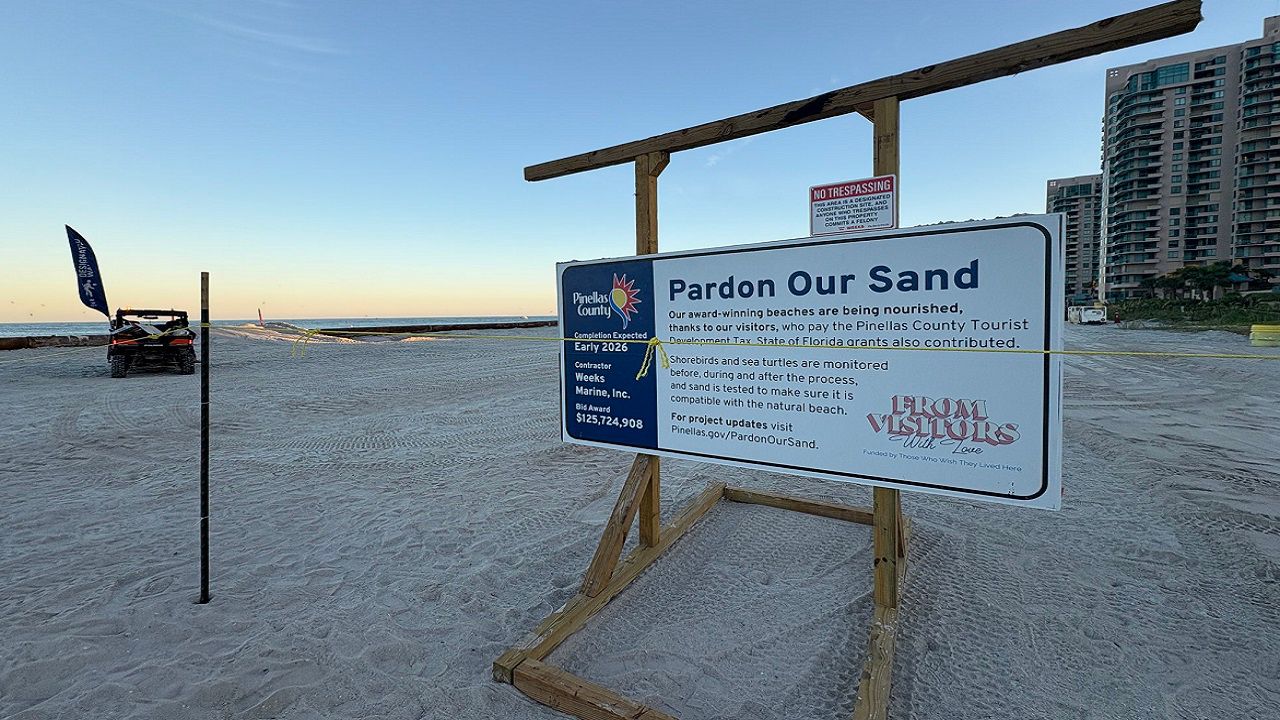CLEARWATER, Fla. — Pinellas County is now one month into its massive beach renourishment project that will bring 2.5 million cubic yards of sand onto a 9-mile stretch of eroded coastline.
To date, the county has completed work in Redington Shores and Indian Shores. Work is taking place this week along a stretch of Sand Key in Clearwater. The coming weeks will focus on popular beach access spots, including Upham Beach in St. Pete Beach and parts of Treasure Island.
Work will also begin later this fall in Indian Rocks Beach, which is a stretch with more than 30 unsigned easements.
What You Need To Know
A Pinellas County beach renourishment project is complete in much of Redigton Shores, Indian Shores, and a southern section of Indian Rocks Beach
Work on Upham Beach in St. Pete Beach and Sunset Beach in Treasure Island is expected to start late this month
County officials say they are currently missing more than 30 easements in Indian Rocks Beach
INTERACTIVE MAP: What areas are coming up next
At the properties that Pinellas County does not have easements for, the county is only placing sand from the edge of the private property to the waterline. That means, some properties will have dips behind their homes, making them potentially vulnerable during future storms.
In past renourishment cycles, the Army Corps of Engineers paid for more than half the project.
For the past 10 years, the agency has been at a standstill with Pinellas County over newly required easements from beachfront homeowners.
We’re 1 month into @PinellasGov most interesting beach renourishment project yet. This week – crews are in Sand Key in Clearwater, soon they will be onto Belleair Beach. Redington Shores and Indian Shores are all wrapped up. The project costs $114 million in bed tax dollars @BN9 pic.twitter.com/gmFLLpKrGX
— Angie Angers (@angie_angers) October 13, 2025
Fearing the beaches had reached a critical level, the county turned to using $114 million in tourist development tax dollars to pay for the renourishment. The additional $11 million came from state grants.
“Because we have a strong reserve of tourist development tax, the county commission prioritized utilizing those to reinvest in this sand,” explained Brian Lowack, with Visit St. Pete Clearwater. “This is just another example of how visitors give back to our community.”
The sand replacement project is taking place 24 hours a day, and at times, on multiple sections of the beach at the same time. County officials say they are hoping to have the renourishment work completed by late January 2026.

